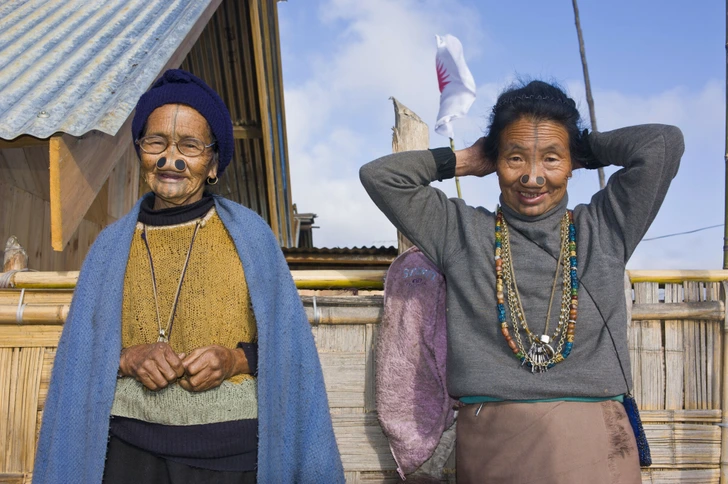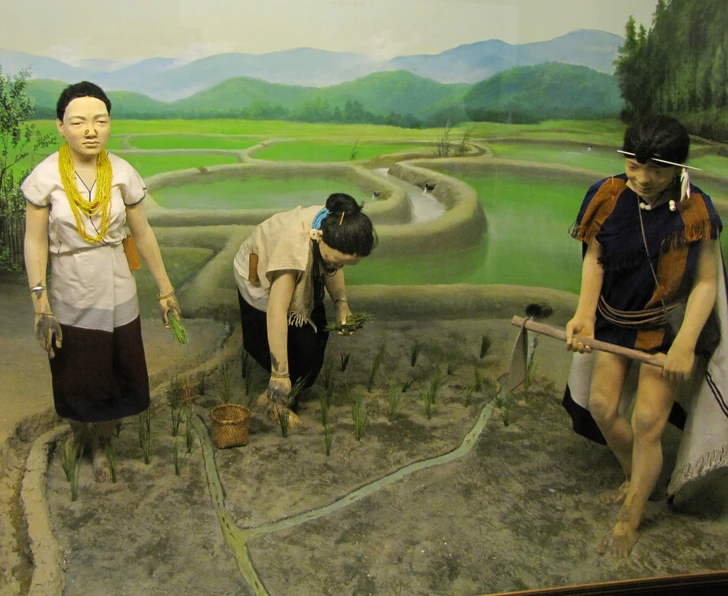Meet a Rare Tribe Where Women Must Plug Their Noses to Avoid Unwanted Attention

The Apatani Tribe: Guardians of a Fading Tradition in the Heart of Arunachal Pradesh
Nestled within the serene confines of the Ziro valley, deep in the rustic expanse of rural Arunachal Pradesh, resides the Apatani tribe, also known as the Tani. This tribe, steeped in history and tradition, has seen its age-old customs, notably the ritualistic nose plugging and facial tattooing of women, gradually fade away since the 1970s, becoming mere echoes of a bygone era.
Origins of Unique Practices
Legend whispers tales of a time when these peculiar practices emerged out of necessity—a shield against the marauding shadows of tribal raiders. With each onslaught, women disappeared into oblivion, leaving behind haunting silence and sorrow. In response, the Apatani chieftain decreed that the fairest women among them should bear conspicuous adornments: large circular nose plugs known as yaping hurlo, meticulously positioned to deter any ill-intentioned gaze. Complementing this deterrent, intricate tattoos cascaded vertically from brow to chin, obscuring the allure that could attract unwelcome attention.

A Life Sustained by Fertile Wetlands
The Apatani are also renowned for their fertile wetlands. Nestled amidst the verdant expanse of Arunachal Pradesh’s lush landscapes, the Apatani subsist primarily on the bounty of rice paddies and the resources of their abundant waters. Their sustenance is intertwined with the rhythms of Donyi-Polo, their indigenous faith that venerates the celestial dance of the Sun (Donyi) and the Moon (Polo). This harmonious relationship with their environment has sustained the Apatani for generations, showcasing their profound respect for nature and its cycles.

Decline of Tradition
Yet, the relentless sands of time have eroded the fabric of these rich traditions. The once-vibrant rituals of nose plugging and facial tattooing are now vestiges of a narrative slipping into obscurity, offering a fleeting glimpse into the enigmatic tapestry of the Apatani’s history. Today, only a few elderly women bear the marks of these customs, serving as living testaments to the tribe’s storied past.

Modern Curiosity and Respect for the Uncontacted
In our modern era, drones have captured rare images of various uncontacted tribes, including those like the Apatani. These glimpses into the lives of tribespeople, so different from our own, amuse and intrigue many. However, they also serve as a reminder of the importance of respecting the privacy and sovereignty of these tribes. Each snapshot is a window into a way of life that is rapidly disappearing, highlighting the need for preservation and understanding of these unique cultures.
ALSO READ
The story of the Apatani tribe is a poignant reminder of the fragility of tradition in the face of modernization. As the world continues to change, it is crucial to remember and honor the customs and practices that have shaped the identities of indigenous communities. The Apatani’s unique rituals, deeply rooted in their history and environment, are not just relics of the past but symbols of resilience and cultural identity. By recognizing and respecting these traditions, we can ensure that the rich tapestry of human culture remains vibrant and diverse for future generations to appreciate and learn from.
PHOTO CREDIT: Sumantbarooah / Wikimedia Commons, Indian times